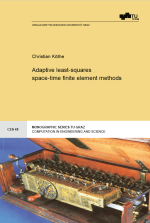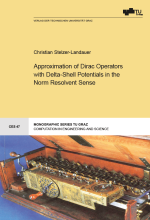Superoscillations are functions with the paradoxical behavior of oscillating (at least
locally) faster than their largest Fourier component. For example, plane waves with
small frequencies (e.g. red light) can interfere in such a way that a resulting wave
with arbitrary large frequency is created (e.g. blue light or theoretically even a gamma
ray).
Due to the wave-particle duality in quantum mechanics, also particles can exhibit
this superoscillatory behavior. One of the main questions in this context then is:
What happens when a particle with a superoscillating wave function interacts with a
potential? Does this delicate interference effect persists in time, or is it destroyed by
the external force?
The aim of this thesis is to introduce a universally valid and mathematically precise
formalism of the concept of superoscillationslationen, which in particular covers all
the existing results of the past literature. Moreover, a method is developed which
ensures the time persistence of superoscillations for whole classes of potentials.
Issue: Open Access E-Book
ISBN: 978-3-85125-931-5
Language: Englisch
Release date: December 2022
Series: Monographic Series TU Graz / Computation in Engineering and Science, Issue 43
Superoscillations are functions with the paradoxical behavior of oscillating (at least
locally) faster than their largest Fourier component. For example, plane waves with
small frequencies (e.g. red light) can interfere in such a way that a resulting wave
with arbitrary large frequency is created (e.g. blue light or theoretically even a gamma
ray).
Due to the wave-particle duality in quantum mechanics, also particles can exhibit
this superoscillatory behavior. One of the main questions in this context then is:
What happens when a particle with a superoscillating wave function interacts with a
potential? Does this delicate interference effect persists in time, or is it destroyed by
the external force?
The aim of this thesis is to introduce a universally valid and mathematically precise
formalism of the concept of superoscillationslationen, which in particular covers all
the existing results of the past literature. Moreover, a method is developed which
ensures the time persistence of superoscillations for whole classes of potentials.






